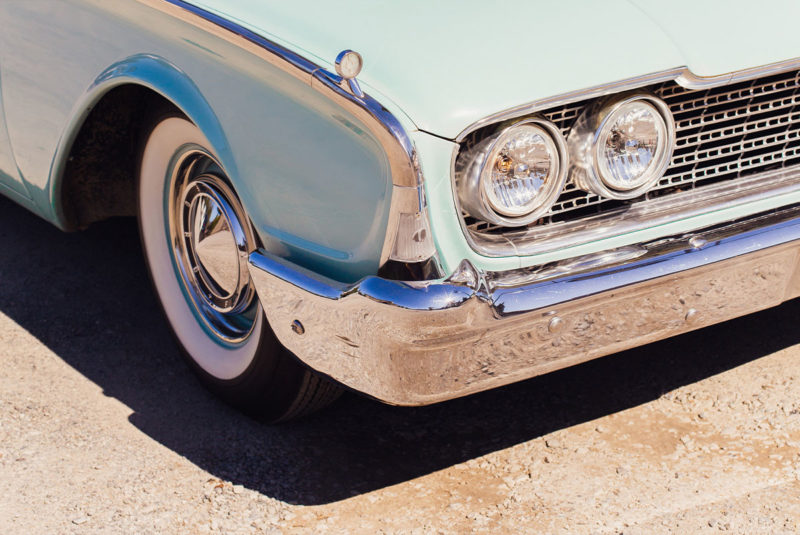If you’ve ever seen a car window sticker at the dealership then paid a different price for the car, you know how confusing car prices can be. What are you paying for? And what’s the price to drive off the lot? 🚙 💨
Since you’re asking, the price to drive off the lot is called the out-the-door price. And it’s a crucial number to know before you agree to a sale.
We’ll go over what’s included in the out-the-door price, how to negotiate it and how to budget when it’s time to buy a car.
What Is Included in the Out-the-Door Price?
The out-the-door price (sometimes referred to as the OTD price) is the full price you pay to drive away with a car – the sale price plus taxes and fees. If you’re paying with cash, that translates into how big of a check you’ll write or how much you’ll charge on your card. If you’re getting a car loan, it’s the amount of money you’ll need to borrow. 💰
Ask the dealer what the out-the-door price is before you move further into the car buying process. Knowing what’s included in the OTD price is crucial to negotiating a price that sticks to your budget.
The out-the-door price usually includes:
- Price of the vehicle
- Title and registration fees (which vary by state)
- Taxes (which vary by state)
- Dealer fees (including documentation fees, advertising fees and new vehicle destination fees)
- Extended warranties, gap insurance, credit insurance or extra dealer packages
The dealer may also include your down payment and trade-in credit (if you’re trading in a car) when calculating the out-the-door price.
By the way, if you’re taking out a loan to buy a car, the loan’s interest is not included in the OTD price.
In short, the out-the-door price is usually higher than the advertised price because taxes and fees are added to the price of the vehicle.
What Is Out-the-Door Price vs. MSRP?
The MSRP (manufacturer’s suggested retail price) is the sticker price you often see displayed in bold bright numbers on a car’s windshield or posted next to it online.
But don’t be fooled! It’s nowhere near the price you’ll pay for the car.
True to its name, the MSRP is a suggested price. Because the MSRP doesn’t include taxes or fees, the out-the-door price is usually higher. Use the MSRP as a starting point to calculate the out-the-door price.
How Do You Calculate the Out-the-Door Price?
You can’t calculate the out-the-door price until the car dealer tells you which fees are included. But you can work out a rough estimate using the MSRP as your starting point and adding on the taxes and fees you expect to pay.
Let’s get some practice in and guesstimate the OTD price of a used car with a $10,000 price tag:
| Item | Price |
| Vehicle MSRP | $10,000 |
| Title and Registration Fees | $100 |
| Sales Tax | $900 |
| Documentation Fees | $200 |
| Other Dealer Fees | $500 |
| Estimated OTD price | $11,700 |
You can use an out-the-door price calculator to estimate the OTD price of the car you want to buy. But remember, some dealer fees won’t be included in the estimate, so you should expect to pay a little more.
How Do You Negotiate the Out-the-Door Price?
Once you’ve chosen the car you want at the dealership, you’ll head to the dealer’s finance department to work out payment details and secure financing if needed. This is your chance to negotiate. 🤝
Pro tip #1: Negotiate the out-the-door price, not the MSRP. (Remember, the MSRP is usually considerably lower than the out-the-door price.)
Pro tip #2: Ask the dealer to bring down the OTD price when you start negotiating. Don’t focus on every single line item or fee. If the dealer’s new offer is still miles from what you want to pay, then laser in on specific fees. 😉
In case this happens, we’ve put together a list of fees (some may be negotiable and some may not) to help you out.
Here are possible negotiables:
- Documentation fee: This fee covers the cost of processing the paperwork involved in the sale. Some states set a cap on the documentation fee, but it can run you a few hundred dollars or more.
- Dealer preparation fee: This fee covers the dealer’s cost to clean the car for you. Whether you’re buying a new car or a used car, it should be clean before you hop in.
- Transportation fee: A dealer may include a transportation fee to cover the cost of transporting the vehicle (like from one dealership to another). If the car is sitting on the lot, work on removing any transportation fees.
- Extended warranties or maintenance: Many car buyers claim these optional dealer services aren’t worth their price. But if you want them, see if you can negotiate on the cost.
- VIN etching: If you’re buying a new vehicle, a dealer may charge you a fee to engrave the VIN into the windshield, and you can usually negotiate the price. If you’re buying a used car, it should already be there.
Here are some likely nonnegotiables:
- Taxes: Taxes are set by local and state governments and can’t be negotiated.
- Title and registration fees: These fees are set by the department of motor vehicles (DMV) in each state and can’t be negotiated.
- Destination fee: Car manufacturers charge dealers this fee to ship new cars from the factory to dealerships. The fee is usually passed on to you when you buy a new car.
- Gap insurance and credit insurance: While the products are optional – their prices aren’t negotiable.
Make sure you know and discuss what’s included in the out-the-door price before signing a contract. 🖊️
What about monthly payments?
If you’re financing the car, you’ll have a monthly loan payment to manage. But when it comes time to negotiate, forget your monthly payments. Focus on negotiating the total price of the car.
Imagine you’re in a dealer’s office asking them to lower your monthly car payment because you crunched the numbers, and you don’t think you can afford the estimated payment. The dealer can choose from several options, including extending your repayment term, to hit your desired monthly payment, but it won’t bring down the price of the car.
A longer repayment term can lower your monthly payments, but you’ll end up paying more in interest. If you focus on the monthly payment instead of negotiating a lower car price, your loan will be more expensive.
Dealers commonly try to upsell add-ons and expensive upgrades to buyers and then extend the car loan term to disguise how much those bells and whistles inflated the size of the loan. 💲💲 Focusing on the out-the-door price during negotiations may prevent impulse buys and save money when it’s time to finalize the sale.
How Do You Budget for the Out-the-Door Price?
Before you start car shopping, pull together a car buying budget to estimate an affordable monthly payment and out-the-door price.
Estimate your monthly payment budget
While you wouldn’t negotiate a car’s final price based on its monthly payment, you should feel confident that the monthly payment won’t wreck your budget.
Have your eye on a specific car? Use an online OTD price calculator to estimate total cost based on the car’s MSRP. Then calculate your auto loan payment to see if it works for your budget.
Scrap the paper and pencil and use Edmunds’ car loan calculator to estimate your monthly payment.
Estimate your max budget
Even if you don’t have a car in mind, you can enter different prices in the car loan calculator to estimate your max budget – aka the out-the-door price you’ll aim for during negotiations.
Out the Door and on Your Way
In an ideal world, we could delete the “S” from MSRP and negotiate on the price that tempted us into the dealership in the first place. But we live in the real world, and we’ll have to take the MSRP and tons of fees into consideration before we can walk out the door and wave goodbye to the dealer in the rearview mirror.
To be a winner at the car-negotiation game (and protect your budget), negotiate the sale on the out-of-door price – and nothing else.
The Short Version
- The out-the-door price (sometimes referred to as the OTD price) is the full price you pay to drive away with a car
- The out-the-door price is usually higher than the advertised price because taxes and fees are added to the price of the vehicle
- Use the MSRP as a starting point to calculate the out-the-door price




